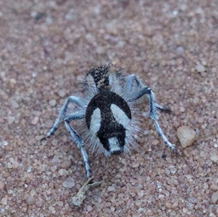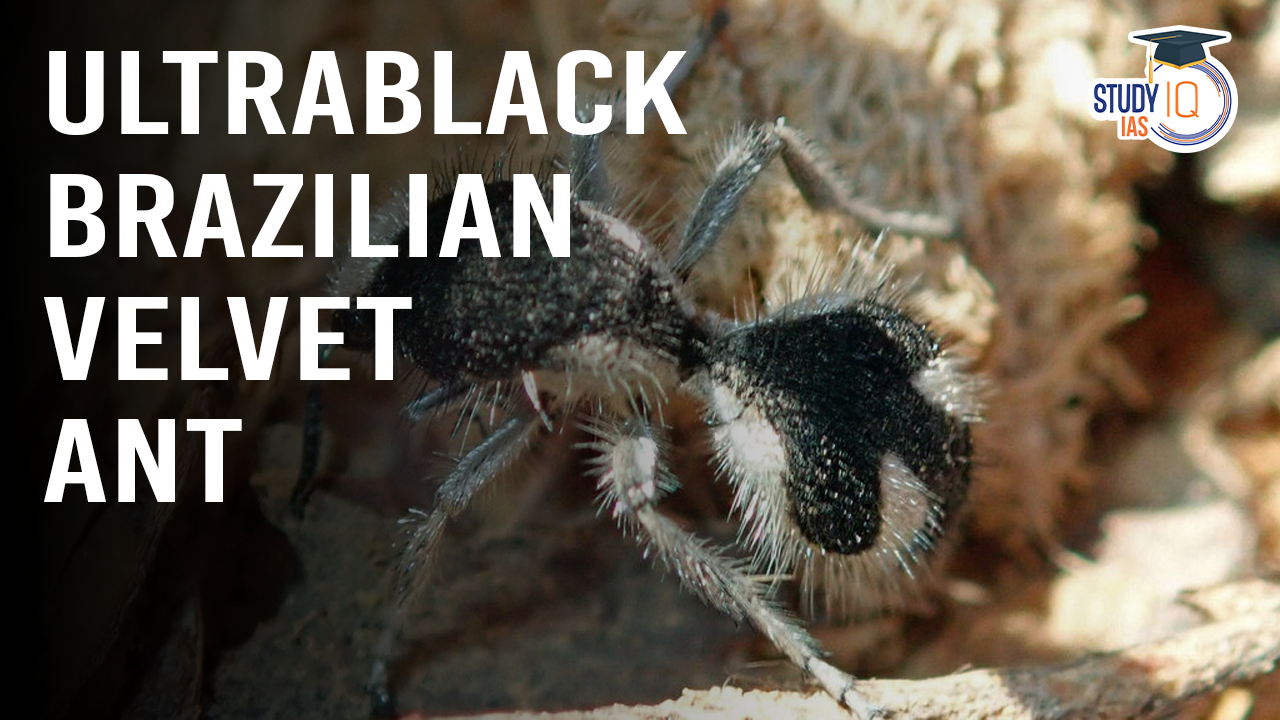Table of Contents
Context: Recent research has revealed that the black parts of female velvet ants are ultrablack, absorbing nearly all visible and ultraviolet light.
About Ultrablack Brazilian Velvet Ants
Ultrablack Brazilian Velvet Ant, scientifically known as Traumatomutilla bifurca, is a fascinating and unique insect species.
- Velvet ants, despite their name, are not ants but wasps.
- They are recognized for their distinctive fluffy appearance.
- Among them, a species native to Brazil’s tropical savannas and dry shrub deserts, Traumatomutilla bifurca, is noted for its striking black-and-white markings.

- As the name suggests, these velvet ants possess an incredibly dark coloration. Their exoskeleton absorbs nearly all visible light, making them appear almost perfectly black. This unique adaptation is rare in the insect world and its function is still being researched.
- Habitat: These intriguing insects are primarily found in the Caatinga region of northeastern Brazil, an arid landscape characterized by sparse vegetation and rocky terrain.
Ultrablack: A Rare and Remarkable Shade
- The black parts of female velvet ants have an ultra black coloration that absorbs nearly all visible and ultraviolet (UV) light.
- Ultrablack is a rare and remarkable shade in nature, produced through microstructures that trap light.
- Unlike regular black, which comes from melanin, ultrablack has no sheen and serves multiple functions, such as camouflage, thermoregulation, and mate attraction.
- The ultrablack in velvet ants is created by thin, stacked platelets under a dense layer of hair, similar to the pages of a book.
- Only female velvet ants have ultrablack pigmentation.
Why is Ultrablack Pigmentation Important?
The evolutionary significance of the Ultrablack colouration in T. bifurca is still a subject of scientific investigation. Some possible hypotheses include:
- Camouflage: The velvet ants’ deep black color may help them blend in with their dark, rocky surroundings, giving them an advantage in avoiding predators or surprising prey.
- Thermoregulation: The dark pigmentation could help the insects absorb heat from the sun, aiding in thermoregulation in their hot and arid environment.
- Mate Attraction: The striking black colour might attract mates, making females more conspicuous to males.


 National Environmental Engineering Resea...
National Environmental Engineering Resea...
 Tiger Reserves in Madhya Pradesh List an...
Tiger Reserves in Madhya Pradesh List an...
 Colossal Squid Resembles a ‘glass scul...
Colossal Squid Resembles a ‘glass scul...





















